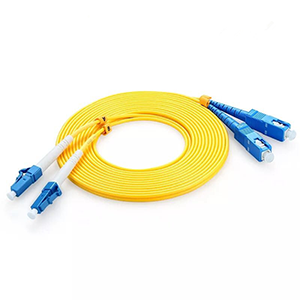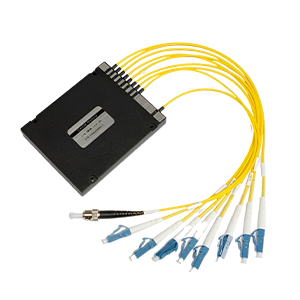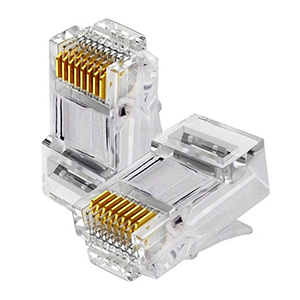Fiber optic connectors undoubtedly play an important role in fiber optic networks. This article will explore the unique characteristics of Unicam fiber optic connectors. We will first define the structure and function of fiber optic connectors and briefly introduce the common types of fiber optic connectors. Next, we will explain the working principle and structural design of Unicam connectors and analyze their unique advantages over other connectors.
We will explain the convenience of Unicam connectors in installation and use, and explore their applicability in network deployment. In addition, we will introduce the compatibility of Unicam connectors with other connectors and analyze their interoperability in heterogeneous networks. Finally, we will describe the correct installation and debugging methods of Unicam connectors and provide suggestions for daily inspection and maintenance.
Basic concepts of fiber optic connectors
Let me introduce you to the basic concepts of fiber optic connectors in detail.
Structure and function of fiber optic connectors:
Fiber optic connectors are key components used to connect fiber optic ports in fiber optic communications. Its main functions are:
(1) Structural design:
- The connector is composed of multiple parts such as the connector body, the ferrule, and the fixing card.
- Through precise mechanical design, the optical fiber and the optical fiber port are accurately connected.
(2) Optical signal transmission:
- The connector reliably completes the transfer of optical signals from one optical fiber to another.
- Ensure that the optical signal will not produce excessive coupling loss at the connection.
(3) Mechanical fixation:
- The connector provides a mechanical fixation method to firmly connect the optical fiber to the device port.
- Ensure the stability and reliability of the connection.
Common fiber optic connector types:
(1) SC (Subscriber Connector) connector:
- Adopt push-pull assembly, simple and reliable structure.
- Widely used in various fiber optic network equipment.
(2) FC (Ferrule Connector) connector:
- Adopt threaded assembly, with high positioning accuracy.
- Commonly used in applications with high transmission performance requirements.
(3) LC (Lucent Connector) connector:
- Small size, suitable for dense wiring scenarios.
- Become one of the current mainstream fiber optic connectors.
(4) ST (Straight Tip) connector:
- It uses radial fixing method and has good mechanical strength.
- It was widely used in the past, but has been gradually replaced by new models such as SC and LC.
In addition, there are other types of fiber optic connectors such as MT-RJ and MPO, each with its own characteristics and application scenarios. In short, fiber optic connectors are an indispensable key component in fiber optic communication, and different types have their specific application advantages and usage scenarios.
Technical features of Unicam connectors
Let me introduce you to the technical features of Unicam fiber optic connectors in detail.
Unicam connector working principle and structural design:
Unicam connector is an innovative fiber optic connector, its main technical features are as follows:
(1) Working principle:
- Unicam adopts the unique design of “one-way insertion”.
- Through the precise mechanical structure, the optical fiber and the optical interface are automatically aligned.
(2) Structural design:
- Unicam consists of plugs, sockets, fiber optic chips and other components.
- The plugs and sockets adopt a special structural design to achieve one-way plugging and automatic alignment.
(3) Positioning method:
- Unicam uses special geometric shapes and buckles to achieve precise positioning.
- No other positioning means are needed, and the operation is simple and fast.
Unicam connector has unique advantages over other connectors:
(1) Simplified installation:
- Unicam only needs one-way plugging and unplugging, and no fine adjustment is required.
- Greatly reduces the operating difficulty and time cost of construction workers.
(2) Improved reliability:
- Unicam’s automatic alignment design avoids alignment errors caused by human factors.
- Thereby significantly improving the mechanical stability and optical performance of the connection.
(3) Reduced maintenance costs:
- Unicam connectors are easier to maintain and can be disassembled and assembled without professional tools.
- It is conducive to rapid on-site repair and maintenance, reducing operation and maintenance costs.
(4) Compact wiring:
- Unicam is compact, which is conducive to dense wiring and space utilization.
- It is suitable for use in limited space environments such as computer rooms and data centers.
In summary, the unique design of Unicam connectors has obvious advantages in simplifying installation, improving reliability, and reducing maintenance costs. It is an innovative fiber optic connection solution worthy of attention.
Application advantages of Unicam connectors
As an innovative fiber optic connection solution, Unicam connectors do have many advantages in installation and network deployment. Let me explain it in detail for you.
Convenience of Unicam connectors in installation and use:
(1) Simplified installation:
- Unicam’s “one-way insertion” design greatly simplifies the installation process of the connector.
- No professional tools and complex adjustments are required, which greatly improves construction efficiency.
(2) Quick disassembly and assembly:
- The structural design of Unicam connectors makes disassembly more convenient.
- Connectors can be quickly replaced or repaired without professional skills.
(3) Reduce errors:
- Unicam’s automatic alignment feature eliminates alignment deviations caused by human operation.
- Thus, connection loss problems caused by improper alignment are avoided.
(4) Improved reliability:
- Unicam has high stability and mechanical strength, which is conducive to improving the long-term reliability of the connection.
- It can maintain good optical performance even in harsh environments.
Applicability of Unicam connectors in network deployment:
(1) Computer room/data center:
- Unicam’s compact design is very suitable for dense wiring in computer rooms and data centers.
- Simplifies on-site installation and maintenance, and improves operation and maintenance efficiency.
(2) Passive Optical Network (PON):
- Unicam’s stable and reliable performance is very suitable for passive optical network applications such as PON.
- It can improve the connection reliability in scenarios such as fiber-to-the-home.
(3) 5G/Optical Transport Network:
- Unicam is easy to construct and is more suitable for large-scale deployment of 5G and long-distance transport networks.
- It greatly shortens the on-site installation time and reduces labor costs.
(4) Industrial/Military Environment:
- Unicam has excellent environmental adaptability and is very suitable for harsh environments such as industry and military.
- Reliable mechanical properties ensure long-term stability of the connection.
In short, the unique advantages of Unicam connectors in simplifying installation and improving reliability make it very suitable for various network environments such as computer rooms, PON, and 5G, greatly improving the convenience and reliability of fiber optic network deployment.
Compatibility and interoperability of Unicam connectors
As an innovative fiber optic connection solution, the compatibility and interoperability of Unicam connectors with other connectors in the industry are also worth paying attention to. Let me introduce it to you in detail:
Compatibility of Unicam connectors with other connectors:
(1) Compatibility with SC/FC/LC connectors:
- Unicam connectors can be compatible with standard fiber optic connectors such as SC, FC, and LC through adapters.
- This method can achieve smooth upgrade and compatibility of old equipment.
(2) Compatibility with MPO/MTP connectors:
- Unicam also supports adaptation with MPO/MTP multi-fiber connectors.
- It can achieve high-density multi-core fiber connection and interconnection.
(3) Compatibility with Unicam itself:
- The plug and socket of the Unicam connector adopt a unified standard design.
- Therefore, Unicam interfaces can be directly connected to each other.
Interoperability of Unicam connectors in heterogeneous networks:
(1) Compatibility:
- Unicam connectors can be interconnected with various standard fiber interfaces to achieve heterogeneous network interoperability.
- This facilitates the upgrade and replacement of network equipment.
(2) Stability:
- Unicam’s automatic alignment design ensures long-term stability of the connection.
- Even when interconnecting between devices from different manufacturers, reliable optical performance can be guaranteed.
(3) Simplicity:
- Unicam’s quick installation and maintenance features greatly reduce the complexity of on-site construction and maintenance.
- It is conducive to shortening the equipment upgrade time in heterogeneous networks.
(4) Compatibility certification:
- Unicam connectors have passed the interoperability certification of relevant standard organizations.
- Ensure seamless compatibility in various heterogeneous network environments.
In short, Unicam connectors can seamlessly adapt to different manufacturers’ equipment and protocol standards with their excellent compatibility and interoperability, which is conducive to accelerating the upgrade and deployment of heterogeneous networks. This is another major advantage.
Deployment and maintenance of Unicam connectors
Let me introduce you to the deployment and maintenance of Unicam connectors in detail.
Correct installation and debugging methods for Unicam connectors:
(1) Installation steps:
- First, confirm the cleanliness of the fiber end and Unicam connector.
- Insert the fiber plug directly into the Unicam socket without any adjustment.
- There will be a noticeable snapping sound when inserting, indicating that a reliable connection has been completed.
(2) Alignment check:
- You can use tools such as optical power meters to check the optical power loss at the connection.
- Under normal circumstances, the loss should be less than 0.5dB, indicating good alignment.
- If the loss is too large, adjust the position of the plug appropriately to optimize the alignment.
(3) Fixing method:
- The Unicam connector has a reliable mechanical fixing mechanism and does not require additional fixing measures.
- However, in situations where there are external forces such as vibration, a fixing clamp can be used for further reinforcement.
(4) Safety precautions:
- Avoid looking directly at the fiber port during installation to avoid eye damage.
- The connector surface should be kept clean to avoid accumulation of dust or dirt.
Recommendations for daily inspection and maintenance of Unicam connectors:
(1) Regular cleaning:
- The connector surface and fiber end face should be cleaned regularly using professional cleaning tools.
- Keeping the connection point clean is conducive to maintaining long-term optical performance.
(2) Appearance inspection:
- Check the appearance of the connector regularly to find any signs of damage or breakage.
- If a problem occurs, the connector should be replaced immediately to avoid further optical link failure.
(3) Performance monitoring:
- The optical power loss at the connection can be checked regularly using tools such as an optical power meter.
- If the loss exceeds the standard, the problem should be found and solved in time.
(4) Proper protection:
- When used in harsh environments, dust covers or fixing clamps can be used for protection.
- Ensure that the connector is protected from external mechanical impact or contamination.
(5) Spare parts preparation:
- It is recommended to reserve a certain number of spare Unicam connectors for quick on-site replacement.
- This helps to shorten the repair time of optical link failures.
In short, the daily maintenance of Unicam connectors mainly includes regular cleaning, appearance inspection, performance monitoring, etc., and proper protection and spare parts reserves should be done. Only in this way can the long-term stable and reliable operation of Unicam connectors be ensured.
Summary
The use of Unicam fiber optic connectors can undoubtedly bring many advantages to the construction of optical fiber networks. Our company has long been focusing on the research and development and production of optical communication equipment and its supporting products, and has rich industry experience. Our Unicam series connector products have reached the industry-leading level in optical performance and reliability, and can meet your demanding needs for high-speed network construction.
Whether you need to deploy in a data center, a telecommunications office, or a FTTH access network environment, we can provide you with customized Unicam connector solutions. At the same time, our professional team will provide you with a full range of technical support, including on-site surveys, solution design, and installation and commissioning guidance. Contact us now to learn more about Unicam fiber optic connectors.
Unicam Connector FAQ
A Unicam connector is a brand of field-installable fiber optic connector developed by Corning. It is designed for quick and reliable termination of optical fibers without requiring epoxy curing.
Unicam connectors use a mechanical splice technique to align and secure optical fibers within the connector body. This ensures low insertion loss and high reliability without the need for epoxy curing.
Advantages include rapid field termination, reduced installation time, reliable performance with low insertion loss and high return loss, and compatibility with various fiber types and sizes.
Unicam connectors are commonly used in environments where quick and efficient fiber terminations are required, such as in data centers, telecommunications networks, and enterprise fiber optic installations.
Unicam connectors are compatible with both single-mode and multi-mode optical fibers, supporting different core sizes (e.g., 9/125 μm for single-mode, 50/125 μm and 62.5/125 μm for multi-mode).
Unicam connectors are typically not reusable once terminated, as they involve a mechanical splice that secures the fiber in place permanently within the connector.
Termination kits for Unicam connectors typically include precision cleavers, installation tools (such as crimp tools or cleaver holders), and a termination fixture specific to the connector type.
Yes, Unicam connectors can be used in outdoor installations when paired with appropriate weatherproofing techniques and enclosures to protect the terminated fibers from environmental factors.
Unlike fusion splicing, which requires expensive equipment and precision alignment, Unicam connectors offer a simpler and more cost-effective solution for field terminations without sacrificing performance.
Best practices include ensuring proper fiber cleaving, maintaining cleanliness of connectors and fibers, adhering to recommended insertion and return loss specifications, and testing completed terminations using optical power meters and OTDRs (Optical Time-Domain Reflectometers).




